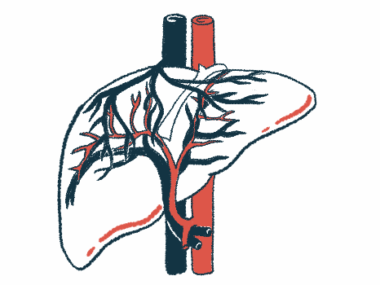Modified scoring system could aid biliary atresia diagnosis: Study
New SBASS version is noninvasive way to diagnose jaundiced infants
Written by |

A modified version of the Simple Biliary Atresia Scoring System (SBASS) offers a noninvasive way for doctors to make a biliary atresia diagnosis, differentiating the condition from other causes of infantile jaundice, a yellowing of the skin and white parts of the eyes, a study showed.
The new system, based on ultrasound and blood tests, may help avoid unneeded surgery in infants whose scores don’t suggest biliary atresia. “By utilizing this scoring system, it allows for the exclusion of [biliary atresia] using a low-risk method, thereby reducing the likelihood of negative surgical explorations,” the researchers wrote.
The study, “A prospective multicentre study evaluating the performance of the modified simple biliary atresia scoring system in predicting biliary atresia,” was published in Pediatric Journal International.
Biliary atresia occurs in infants when the ducts that carry fat-digesting bile from the liver to the small intestine are blocked or do not develop normally. This leads to cholestasis, or slowed bile flow, and bile buildup in the liver, which damages the organ.
Biliary atresia diagnosis key, but difficult
Biliary atresia symptoms, which usually appear within the first weeks after birth, include jaundice, dark urine, and pale stools.
While early diagnosis is key to starting prompt treatment and avoiding further liver damage, differentiating biliary atresia from other causes of infantile cholestatic jaundice can be difficult.
Cholangiography, a procedure that uses fluorescent dye to evaluate bile flow in the bile ducts, is the gold standard for biliary atresia diagnosis, and typically involves open surgery.
“The lack of a standardized preoperative evaluation for infants with cholestatic jaundice often leads to unnecessary surgical explorations, increasing both morbidity and treatment cost,” the researchers wrote.
Currently, “there is no single clinical feature with sufficient sensitivity and specificity to differentiate BA [biliary atresia] from other causes of neonatal cholestasis,” they wrote. A test’s sensitivity is its ability to correctly identify those with a given condition, while specificity refers to correctly identifying those without it.
A scoring system that combines many of these clinical features may have better diagnostic potential. The SBASS, which combines “a small number of variables” and “is easy to use as a bedside diagnostic score,” has been reported to have a sensitivity of 98%, the researchers wrote.
It considers the diameter of the bile ducts, the length of the gallbladder — the organ where bile is stored until needed for digestion — and the presence of a triangular cord sign in ultrasound scans. It also considers the blood levels of bilirubin, the yellowish pigment that gives jaundice its color, and the liver enzyme gamma-glutamyl transferase or GGT.
“In comparison to other scoring systems, the merits of using the SBASS are that it consists of a few variables that are readily obtained in any initial workup of an infant with cholestatic jaundice,” the researchers wrote. “To our knowledge, the SBASS is the simplest scoring system available with high sensitivity and accuracy.”
Study of 73 infants shows test’s potential
The team of researchers in Malaysia assessed the diagnostic potential of a modified version of the SBASS that does not include bile duct diameter measurement as it is not routinely done in their country.
The study involved 73 infants referred to three pediatric surgery centers in Malaysia due to suspicion of biliary atresia from June 2021 to December 2022.
Nearly two-thirds (63%) were boys, and infants were diagnosed with cholestatic jaundice at a median of 58 days, or nearly 2 months, after birth. Most (72%) were diagnosed with biliary atresia. The remaining 21 (28%) of infants underwent cholangiography — 15 via open surgery — to rule out the diagnosis, but were found not to have biliary atresia.
To test how well the modified SBASS could identify infants who actually had biliary atresia before undergoing surgery, the researchers assigned each infant a score from 0 to 6 based on the four variables of the scoring system.
Using a cut-off score of 3 or higher, the scoring system was able to discriminate between infants with biliary atresia from those without it with a sensitivity of 96.2%, and specificity was 61.9%. Overall, the scoring system could distinguish infants with biliary atresia from those with other conditions with an accuracy of 86.3%.
When looking at individual parameters of the modified SBASS, the team found that high blood GGT levels showed the highest sensitivity (94.2%) and specificity (66.7%).
The findings indicate that “the modified SBASS provides a bedside, non-invasive scoring system for differentiating [biliary atresia] from other causes of cholestatic jaundice in infants,” which can reduce “the likelihood of negative surgical explorations,” the team concluded.








